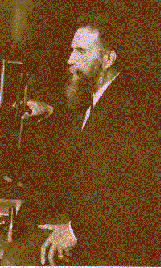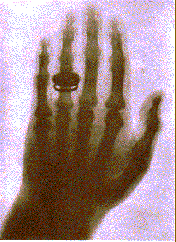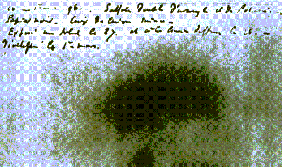
The history of radiation begins as do most major discoveries, by accident. In 1895, X-rays, were discovered by Wilhelm Roentgen. He was conducting an experiment in his lab which involved shooting high speed electrons at a target. Lying nearby this experimental setup was some photosensitive paper. He noted that as the electrons were fired at the target, the nearby paper glowed. The target that the electrons were bombarding was producing X-rays. As would any good scientist, Roentgen was curios to see what these "x-rays" would do if an object was placed in their front. His research assistant was volunteered for the job. Soon the penetrating power of these x-rays was being exploited, and the medical community was relatively quick to pick up on the usefulness of these x-rays.

The first medical X-rays were of quite high power. Today, the radiation dosage that medial x-rays provide has been substantially lessened by reducing their intensity, and our exposure time to them. Other more unique uses were also put into practice. Initially shoe stores used x-rays to determine whether or not a customer's shoes fit. The customer would try on a suitable pair of shoes, stand on a scale like device which would shoot out x-rays towards the patron. It was then quite easy to see the pattern left behind by both the shoe and the bones in the foot. The high intensity used, and the exposure to the entire body to these x-rays (they pointed directly up at your face!) would cause anyone concerned with safety to grin. Upon learning of, and seeing some of the dangerous side effects that this could cause, the practice was soon stopped.

As word was spread concerning Roentgen's rays, it was only a matte of a few days before others were trying to find different sources that would also produce similar type of radiation. One scientist by the name of Henri Becquerel was playing with Uranium to no success. Coincidence again led to the discovery of something very fundamental. Becquerel had some film that he was going to use for another experiment. Fortunately for him, the day turned out to be quite cloudy, and instead of exposing the film, it was left in his desk. When he returned to his office, and developed the film he found that it had been exposed. The uranium that had been left on top of a copper sheet above the film had apparently exposed the film. This was quite remarkable at the time. Becquerel had not expected uranium to react unless it was bombarded by electrons. Becquerel was onto something very big, or should we say something very small. His discovery is a good starting point into some of the basics of particle physics.

NEXT